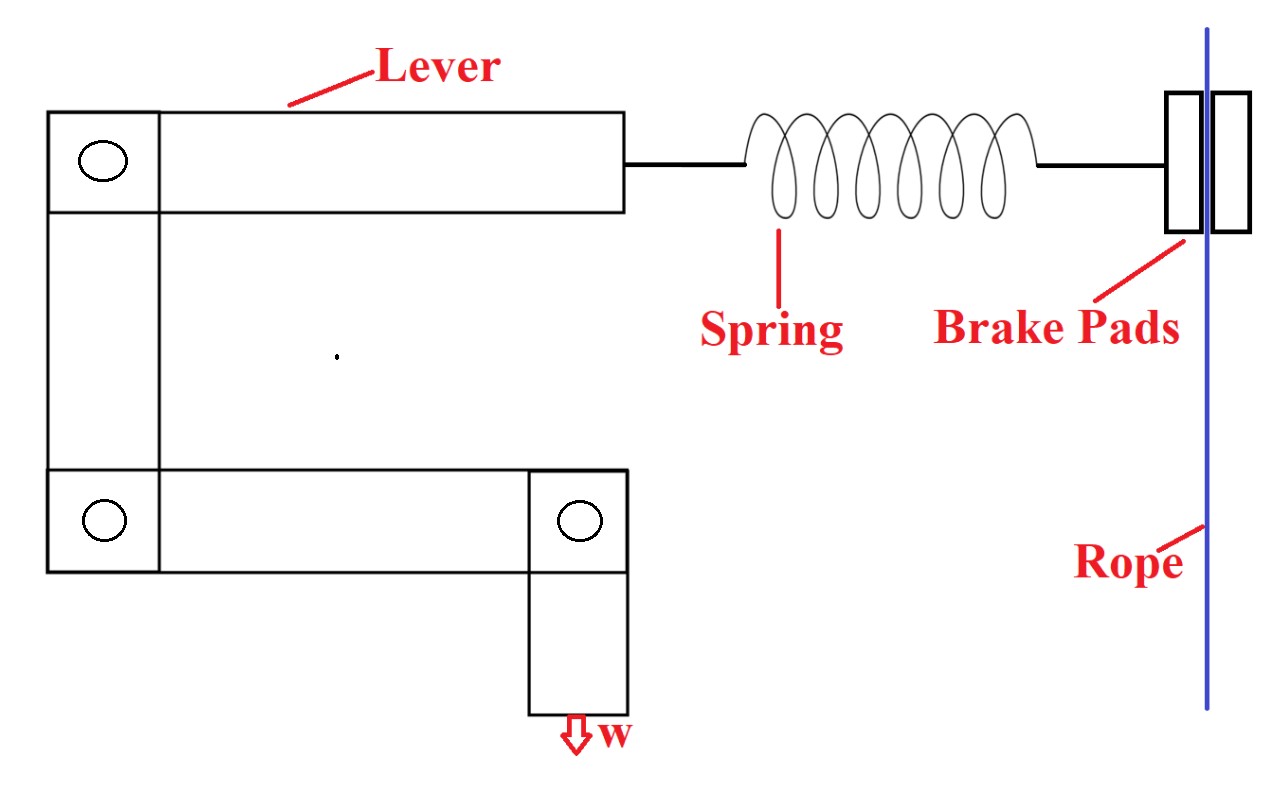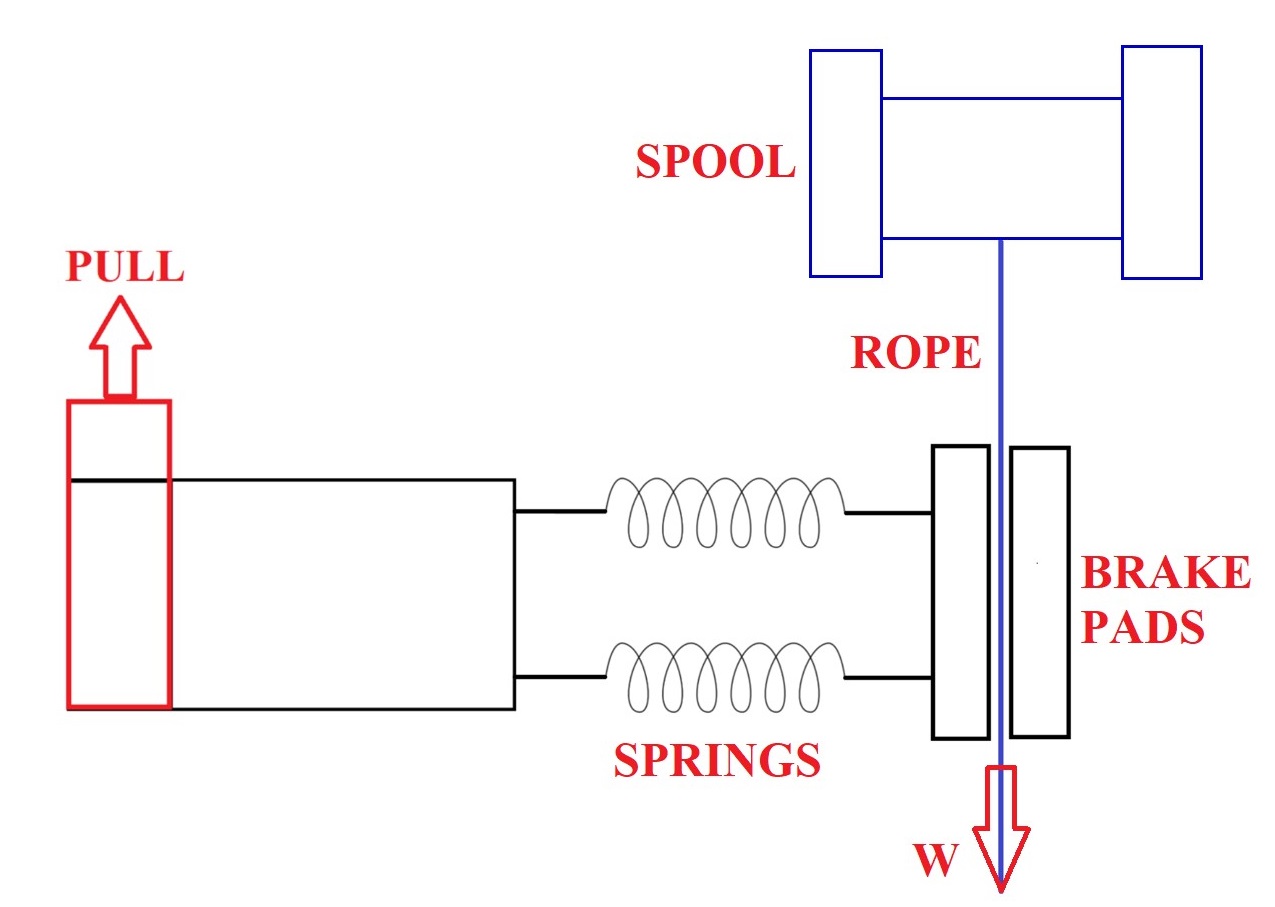Testing Plans
Plans for testing to see if our design passes our requirements.
We will pull the lever down to see if the spring gets compressed.
Once the lever-spring interaction is verified, we will test different weights on the lever to see whether the lever fails or not, and if not, how much the spring is compressed.

| Weight (lbs) | Did the lever fail? | Spring Displacement (mm) | Reached solid length? |
|---|---|---|---|
| 50 | |||
| 100 | |||
| 150 | |||
| 200 | |||
| 250 |
With the hard brake activated (spring fully compressed), we will apply different weights to the rope to ensure that the system does not start moving.
Once the lack of movement is observed, the carriage will then be pulled out of the rail to allow the hard brake to spring back. We will see whether the carriage could be easily pulled out.

| Weight (lbs) | Does the weight descend or stay stationary? | Was it easy to pull the block to deactivate the hard brake? |
|---|---|---|
| 50 | ||
| 100 | ||
| 150 | ||
| 200 | ||
| 250 |
The hook will first be installed on the wall.
The carabiner and rope will then be attached to the hook and various weights will be attached to determine if the hook stays stable.
| Weight (lbs) | Did the hook fail? | Did the rope fail? |
|---|---|---|
| 50 | ||
| 100 | ||
| 150 | ||
| 200 | ||
| 250 |
Once the hard brake is released by the user, the system still remains at rest due to the lever brake. However, in order for the system to start moving to 3 ft/s, we need to lower the friction between the brake and the rope. Therefore, the rope will be partially coated with a lubricant of a lower coefficient of friction for a limited distance it takes for the system to accelerate to 3 ft/s, and then brought back to equilibrium when the rope coefficient reverses back to what it was originally.

In order to test this mechanism, we will attach a weight to the system and observe the effect.
Some things to look out for during this test are:
• Does the system start moving after the hard brake is released?
• Does the system reach 3 ft/s and then stay at a constant speed?
We will then use a speed tracking app called SpeedClock in order to track the speed of the system and ensure that it reaches 3 ft/s and stays constant at 3 ft/s.
Depending on the results of this test, we will adjust the distance of the rope to lubricate.
In order to ensure that this product is safe to be used from all heights, a constant weight will be dropped off from different heights of a building.
| Height (stories) | System Speed (ft/s) |
|---|---|
| 1 | |
| 2 | |
| 3 | |
| 4 | |
| 5 | |
| 6 | |
| 7 | |
| 8 | |
| 9 | |
| 10 |